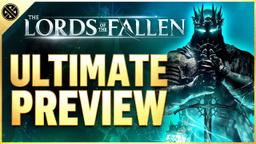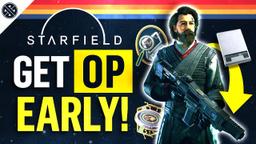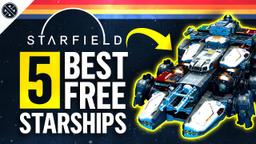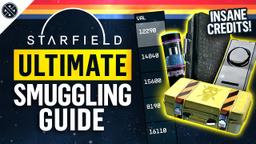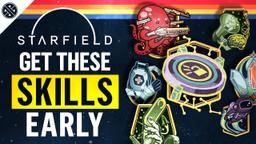A Cosmic Journey of Love, Customization, and Companionship Among the Stars
Written by - Codiak
Updated: July 21, 2023
|
Posted: July 10, 2023

A Starfield Ultimate Preview Series – Part 2
If you’re just jumping into our Ultimate Preview Series, we’d advise you read Part 1 if you’d like a better understanding of where your journey begins.
Part 1 – Your Journey Begins Here
Today we’re taking a deep dive into outer space, and everything that goes along with racing across the galaxy, and it all starts with spaceships. If you didn’t already know, Starfield’s ambition is to create one of the most advanced, and customizable, ship building systems ever and that’s apparent from the in-depth showcase by the developers.
Endless Customization
Everything starts at ship ports. This is where players will be able to interact with an NPC known as a ship technician, and it’s here where you’ll be able repair, modify, buy, sell, and hire crews for your vessel. It’s an essential gateway to all things ships, because as you’ll come to find out, they come in all shapes and sizes, and it’s impossible to have just one.
Within the port you’ll maintain your fleet of ships. The number has fluctuated throughout the years, so my best guess is that you’ll be able to upgrade your fleet size, and that’s good because as you build or commandeer ships, you’ll want to add them to your collection to either keep or sell.

Ships themselves are complicated, and before we dive into customization, I think we should start with a general overview of their capabilities. Each has a number of different systems to consider including:
Offensive Systems
- Lasers
- Ballistics
- Missiles
- Electro magnetic
Defensive Systems
- Hull
- Shields
Secondary Systems
- Cargo
- Max Crew
Flyability
- Jump Range
- Mobility
- Top Speed
- Mass
All of this is influenced by the individual parts, both quantity and quality, you put on your ship and as far as we know there are 13 categories players will have access to:
- Cowling
- Shield Generators
- Dockers
- Fuel Tanks
- Landing Gears
- Grav Drives
- Weapons
- Habs
- Engines
- Cockpits
- Cargo Holds
- Reactors
- Bays
If you’re someone that just wants to fire up the thrusters and head into space, you can do that. If you’d prefer a little customization, mainly just to upgrade your ship with the best parts, you can do that too. For players that want to customize absolutely everything there’s the ship builder mode. I’m already worried I’ll never actually leave the space port because I’ll be too busy messing around with this customization for hours on end.
In this mode you’ll have near endless customization options for how you design your ship. From the individual parts to the variant of that part, giving you the exact look and functionality you want. Keep in mind that the parts you place on your spaceship go just beyond stats, it’s about in-game function as well. For example, your HAB directly impacts how many crew members can be assigned to operate the ship. Other things, like crafting workstations and the armory are also tied to specific parts, so while it’s about the stats, it’s also about how you’ll use your ship when adventuring across the galaxy.




Ship builder mode also shows real time information about your ship as a whole. And it does this as it’s being built, so you know exactly what you get with each part you put on or take off.
Players will also have color control. Based on the June Starfield Direct footage it’s clear that each individual part can be colored based on a player’s preference, and that makes for some pretty hilarious builds.

When your build is complete it’s time to take to the stars and while we haven’t seen a ton of uncut footage from inside the ship once we liftoff we have seen some exciting space combat, and that’s worth talking about.
Inside The Cockpit
Each cockpit has its own unique vibe, and while functionally they’re most likely the same, there’s a certain flair to each design that will absolutely speak to players on an individual level. Once your butt is squarely in the captain’s chair the controls are at your fingertips and here again, we see some familiar UI elements that are pulled directly from the ship builder interface.
Each ship’s systems will vary depending on what weapons your ship has onboard. In this case we see LAS for lasers, BAL for ballistics, and EM for electromagnetic. On the right side of that same panel, we see ENG for engines, SHD for shields, and GRV for grav drive. During spaceflight you can actually divert power to various subsystems to increase their effectiveness. If you’re trying to escape from a pirate ambush, you can allocate power to your engines making you faster. Likewise, if you allocate points to your grav drive the time it takes to make a jump will be reduced. It’s a powerful, dynamic system that will allow you more control when it matters the most.
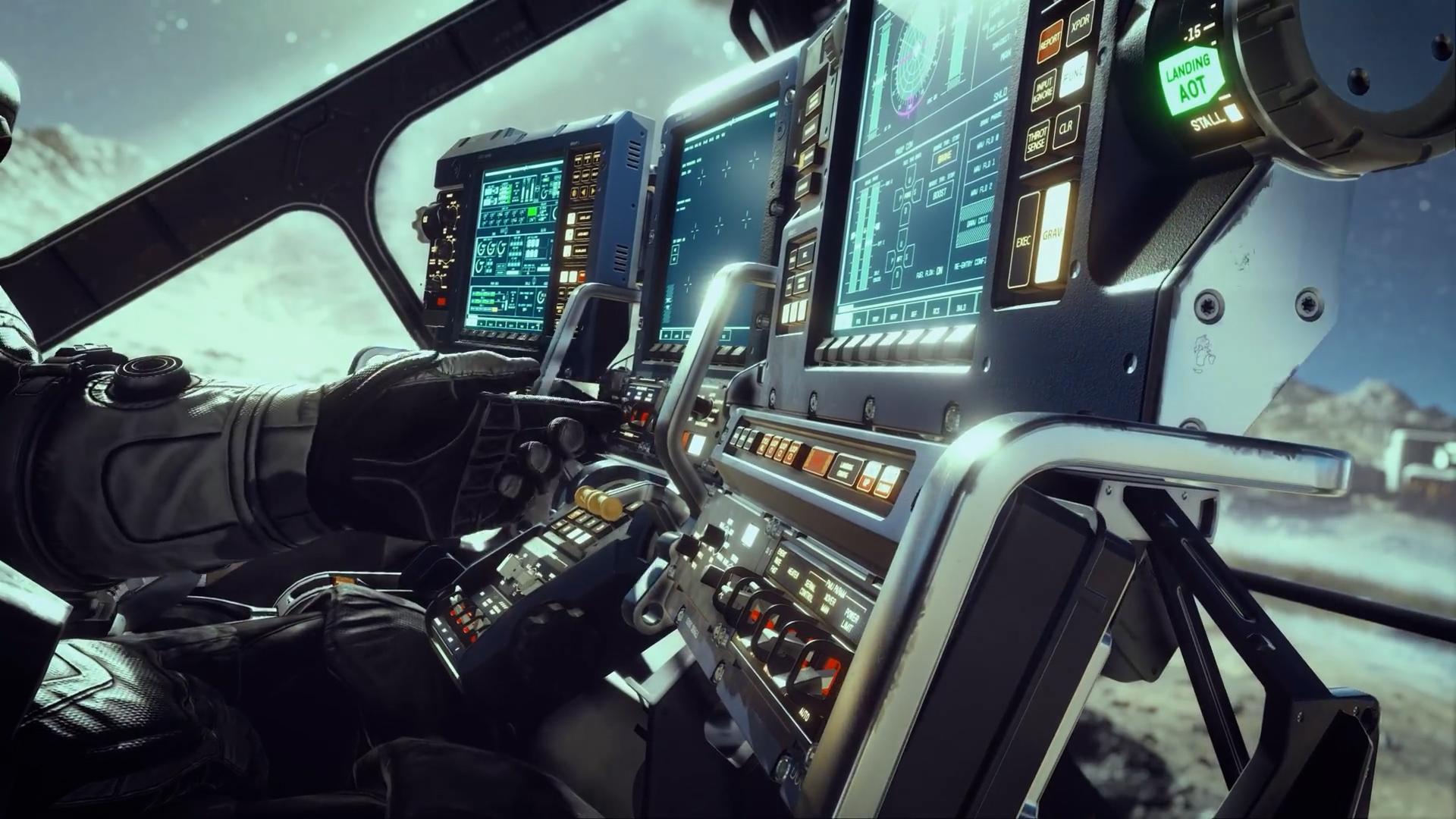



We’ll also find a readout of the ship’s hull health and shield strength, both important pieces of information we’ll need at-a-glance.
Finally front and center is the all-important HUD that displays information about your weapon systems, speed and boost readouts, and details about enemy ships that are within your sight picture. As you fire your ship’s weapons, the capacity, be it energy or ammunition, will be shown to visibly decrease. Much like a FPS game, your weapons will need a period to cool-down or reload before they can be used again, emphasizing the importance of having the right weapons, and potentially crew, on your ship.

As far as combat is concerned, I think it’s safe to say the gameplay leans more towards arcadey and less towards simulation. Don’t get me wrong, I’m sure there will be a fair number of H.O.T.A.S. configurations out there, but the developers have said time and time again their goal for the game from exploration to space combat is fun, and that’s exactly what it looks like here.
Players will have the ability to target lock enemy ships, with the right weapons of course, and their standard ordinance will be guided by a simple tracking system that will anticipate an enemy ship’s movement so you can aim with relative ease. If you have the targeting controls systems skill in the tech tree, you’ll even be able to lock on to individual enemy sub-systems giving you more flexibility with how you approach a fight.

If you choose to take out a ship you can loot the cargo right from the cockpit of your ship. If you prefer to keep your hand-to-hand fighting skills sharp, then you can choose to board an enemy ship and take the fight right to the enemy. Once cleared, not only is all the enemy cargo yours, but the ship is too, and you can take it to any space port and claim it as your own. If you want to keep and upgrade any of your newly acquired ships, you’ll need to register them, which costs credits, a system recently discussed by Todd Howards in an interview with Kinda Funny Games. You could choose to simply sell the ships but based on the pirates we’ve seen in the various trailers, there’s bound to be a flashy spaceship worth claiming as your own.
If you’re someone that prefers a more peaceful approach to their RPGs then you’ll be happy to know, you can hail other ships, chat about ongoing events, exchange rumors, and even engage in trade.

There’s no underselling it, space exploration is one of the major draws for Starfield. The idea of exploring new worlds in peace, or choosing the path of the ruthless pirate, creating your own spaceship is just something no game has ever been able to fully achieve. As a huge fan of the space combat in Star Wars Battlefront 2, I’m really excited to experience that aspect of Starfield. It’s a clear step up from that game, but a much needed step down from Star Wars Squadrons, which leaned a bit too much on the simulation side of things, at least for me. Even Livid, who’s a huge fan of Star Citizen, finds the more casual approach to space combat to be enticing.
Navigating The Stars
Dogfighting in space is all well and good, but to truly master the stars you need to actually, you know, travel them. This is where your navigation console comes into play. On each ship is a terminal that will help you plot a course across the heavens, and this is where all that tweaking of your ship’s components comes to your aid. For now, we’re going to focus on traveling between stars, the most macro view of space travel in the game. From your starmap you’ll be able to see each of the systems in the region. At-a-glance you’ll know what the name of the central star is, and some basic statistics about that star, including spectral class, catalog id, temperature, and mass, just to name a few. More importantly you’ll be able to see how many planets, and moons, are in that system, as well as outposts.
From your current location you can plot a course for distant planets, so long as your ship is up to the task. In order to make the grav jump your ship will need to have optimal cargo, that is, not over the maximum threshold, as well as enough fuel to make the complete jump. If your ship doesn’t have an advanced enough grav drive then you won’t be able to make the jump and you’ll have to hopscotch your way to your destination or upgrade your ship until you can make the desired jump




Once you find a location that’s within range of your ship’s capabilities it’s time to punch in, and from the comfort of your cockpit you’ll enter in a few coordinates, watch the timer countdown, and off you go from one system to another.
It’s also worth pointing out that when you arrive in populated areas, like space operated by the United Colonies, your ship will get scanned for contraband. We don’t know much about smuggling in Starfield, but shoot, if I can steal a whole bunch of loot and offload it planet-side, that sounds like a great way to make some credits. Hopefully we’ll learn more about that before launch.
Companions
We’ve alluded to it already, but one important aspect of navigating the stars is having a crew of companions alongside you to help with the heavy lifting. It’s unclear at this time exactly how much influence each companion will have while in-space, but we know they’re valuable allies in the search to unravel the secrets of the galaxy.
We’ve already been introduced to some of the companions you’ll meet along the way, like Sarah Morgan, the head of Constellation, but every member of Constellation can be recruited, and they each bring with them an important set of skills. Much like the skills you’ll develop as a player each of the companions you recruit also comes with proficiency in a set of skills. For example, Sam Coe, another member of Constellation, has 4 points in piloting, 3 points in rifle certification, 2 points in payloads, and one point in geology. It’s clear that companions like Sam will impact both space travel and combat, as well as augment your skill set when on a planet’s surface, or when they’re assigned to an outpost. Sadly, the true extent of their gameplay impact is unknown and it’s something I’m most eager to learn more about.




As is typical in a Bethesda game, the “major player” key companions have a lot more depth to them than some of the lesser companions. Throughout your travels the four main Constellation companions will offer unique quest lines, and if you’re someone that longs for a little space companionship, those same four NPCs can be romanced, if that’s your thing.
If you’re looking to expand your crew you can find additional companions at space ports, and they can be hired to help maintain your ship, or one of your outposts. You can also find potential companions while out exploring, but as with most things in the game, the decision is yours if you choose to let them accompany you, or waste away in the deepest regions of space.
Your entire roster of companions can be maintained from one simple menu, which is a great quality of life feature that will hopefully make managing dozens of companions a breeze. Here you can see their skills, where they’re assigned, and make any changes necessary as captain and commander of your crew.
Your Adventure Awaits
There’s no denying it, your spaceship will be central to your adventures in Starfield, and I’d even go so far as to say it’s your second home. You’ll spend hours aboard, one of your most likely many ships, maintaining your crew, plotting courses for distant planets, all while solving the greatest mysteries of the galaxy.
